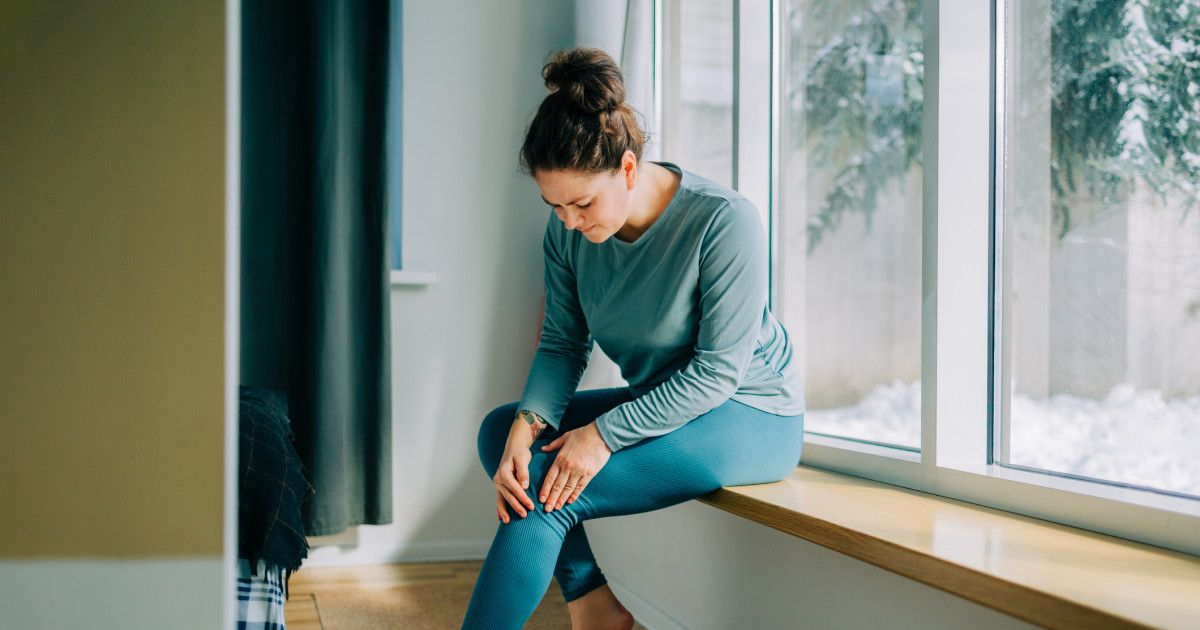Copyright Parade

Key Points Regular exercise after 60 can reduce joint pain and prevent future issues. Running can stress aging joints, but safe, gradual training remains possible and beneficial. Alternatives like walking, cycling, swimming and dancing offer lower-impact joint-friendly exercise options. It’s tempting to want to “retire” from exercising after your 60th birthday, especially if you have joint pain. However, one physical therapist says that regular physical activity is one of the best gifts you can give your joints as you get older. “Building strength, mobility and flexibility can radically reduce joint pain and also address the root cause of why the joint is inflamed and painful in the first place,” explains Dr. Dan Ginadar, DPT, the author of The Pain-Free Body. “The more you can protect your joints and reduce pain with exercise, the less likely you will need things like surgery or medication.” However, certain workouts can worsen joint pain, especially if not done correctly. One specific everyday exercise could be harming your joints if you’re in the 60+ age group. Doctors shared what the exercise entails, why it can harm joints, alternatives and how to continue this activity safely. 🩺SIGN UP for Parade’s health newsletter with expert-approved tips, healthy eats, exercises, news & more to help you stay healthy & feel your best self💊 Why Joint Health Can Decline With Age “As people get older, the cartilage that cushions their joints naturally wears down, which can make them more sensitive to stress,” explains Dr. Gbolahan Okubadejo, MD, an orthopedic and spinal surgeon. Dr. Joseph R. Hribick, PT, DPT, DSc(c), COMT, FAAOMPT, a clinical assistant professor at Lebanon Valley College, says this stress can put you at a higher risk for: Osteoarthritis (OA). OA is the clinical term for a gradual wearing and thinning of joint cartilage. Dr. Hribick says that OA’s effects are especially pronounced in weight-bearing joints, such as the knees, hips and lumbar spine. Tendinopathy. He notes that people experience tendinopathy when their tendons lose elasticity and become more vulnerable to irritation or small tears. Examples of tendinopathy include rotator cuff tendinopathy and tennis elbow. Reduced proprioception. He points out that your body’s sense of joint positioning can begin to decline slightly as you age, affecting your balance. Slower recovery. It’s harder to bounce back from injuries as you age for a reason. “Connective tissues heal more slowly than when we are younger, so recovery and cross-training become more essential,” Dr. Hribick reports. All of the above can, unfortunately, lead to a common fear in people who are aging—and those who love them: “Falls become more of a risk with decreased balance and coordination,” says Dr. Clarinda Hougen, MD, a primary care sports medicine specialist at Cedars-Sinai Orthopaedics. Exercise can help improve balance and coordination, but it can also put too much stress on the joints, particularly with certain activities Related: Want To Prevent Back Pain Over 50? Do This One Simple Exercise Every Day This Exercise Can Hurt Your Joints if You’re Over 60, Doctors Say Sorry, Jogger Joe’s and Josephines, but running can harm the joints, especially as you age. “The repeated impact of running can create an increase in inflammation and degenerative changes in the joints,” Dr. Ginadar reveals. “If you have arthritis or are predisposed to joint inflammation, there is always a risk that running can increase symptoms.” Dr. Okubadejo echoes these sentiments. “For someone over 60, the cartilage in those joints may already be thinner, making the cushioning effect weaker. This can lead to inflammation or small tears in surrounding tissues, which show up as soreness or stiffness after runs.” Weak muscles or poor running form can also throw off alignment and add uneven pressure to one side of the body. Over time, that imbalance can turn minor aches into chronic joint pain if not managed. “Overuse injuries are very common in older people,” Dr. Hougen reports. If these injuries go untreated, Dr. Okubadejo adds, they can transform from minor aches into chronic joint pain. Wait—does that mean that running is off the table after you hit 60? Not necessarily. Related: The Common Sleep Position That’s Hurting Your Back, According to Physical Therapists No, You Don’t Have To Stop Running After 60 You haven’t necessarily reached your “finish line” for running if you’ve already turned 60. In fact, running can also help the joints. “If you start slow and build up slowly, your tendons and bones can adapt to the forces and become stronger and more resilient over time,” Dr. Ginadar adds. Dr. Hribick agrees, saying it can be helpful to compare joint cartilage to a sponge. “It needs compression and decompression—movement—to stay nourished. The key is managing mileage and recovery so that joint loading remains beneficial rather than excessive.” Here’s how to run safely after 60: 1. Prioritize strength training Dr. Hribick says it’s vital to incorporate two strength training sessions into your workout regimen each week when you’re 60+. He suggests that runners ages 60 and above should specifically focus on their hips and core. “Strong glutes, quads, hamstrings and trunk muscles absorb impact and protect your knees and hips from joint stress,” Dr. Hribick says, noting that squats and bridges are two great exercises to include. Related: Exactly How Many Squats You Need To Do a Week To Tone Your Butt 2. Progress and recover Dr. Hribick doesn’t recommend running a marathon before you can even physically walk a mile. He shares it’s important to build up the strength to run gradually, and adds that recovery is a significant part of this process. “Increase running volume and intensity gradually each week, and pay attention to how your body is feeling before, during and after running,” Dr. Hribick says. “Stiffness or pain that lasts more than 48 hours is a cue to rest, modify or strengthen before returning to higher volumes or loads.” Speaking of rest, he recommends at least one full day of rest each week to let tissues adapt and recover. Shoes are crucial. Prioritize function over style (though today’s sneakers usually let you enjoy both). “Choose shoes with appropriate cushioning and replace them every 300 to 500 miles,” Dr. Hribick says. “If you are well under this mileage, still consider replacing running shoes at least one time per year.” 4. Mix up your surfaces Always running on your local sidewalk? It might be convenient, but it can also increase your risk of joint problems. When it comes to running surfaces, variety is more than the spice of life. It’s a joint-protection strategy. “Trails, tracks or treadmills reduce repetitive joint stress compared to only running on pavement,” Dr. Hribick says. Related: The ‘Forgotten’ Core Muscles Women Over 40 Need To Strengthen—and How To Do It Lower Impact Alternatives To Running Movement is a critical tool for lowering your risks for chronic joint pain and the issues that come with it. “The goal is not to avoid movement, but to move wisely and maintain the right balance between loading and recovering,” Dr. Okubadejo says. While you don’t have to give up running if you’re 60+, you may want to if the joint issues are too much to bear. Additionally, incorporating a mix of lower-impact cardio and running can help reduce your injury risk. Experts recommend: Walking or hiking. Dr. Hribick says walking is a low-impact activity that still requires you to bear weight, promoting bone and joint health without the stress on cartilage. Bonus points for making the walk a hike. “Hiking can help improve muscular strength, endurance and cardiovascular fitness at a fraction of the joint stress compared to running—and it gets you outside in nature,” Dr. Hribick states. Elliptical workouts. Ellipticals are worthy running “dupes.” “An elliptical can recreate the same movement patterns as running but eliminates the risk of impact,” Dr. Ginadar says. Cycling. If the ellipticals are all in use or you don’t enjoy the activity, consider using the stationary bike instead. “Cycling helps strengthen your legs and heart without putting stress on your knees or hips since your feet stay on the pedals,” Dr. Okubadejo says. Dancing. Go on and bust a move. Dr. Hougen loves that dancing “helps you maintain balance through dynamic movements”—something that can help lower your risk of falls. Swimming and water aerobics. Dr. Hribick says these activities are great for people managing arthritis or previous joint issues. It’s also a great cross-training activity for runners. “The buoyancy of the water helps unload the joints while still engaging major muscle groups,” he says. Up Next: Sources:



